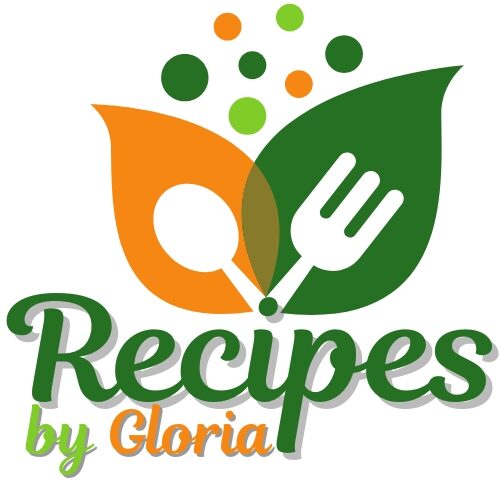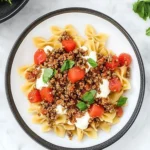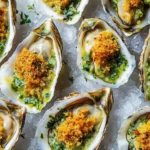This Korean Cucumber Salad, or “Oi Muchim,” is a vibrant and refreshing side dish that captures the essence of Korean cuisine, bold flavors with minimal effort. Crisp cucumber slices are dressed in a mouthwatering blend of tangy rice vinegar, savory soy sauce, fragrant sesame oil, and spicy gochugaru flakes. The result is a crunchy, cooling salad with a fiery twist that perfectly complements heavier dishes like grilled meats, rice bowls, or even tofu.
Ready in just minutes, this salad is a staple in Korean households and an ideal introduction to Korean banchan culture. Its simplicity makes it a great recipe for meal prepping, lunchboxes, or potlucks, while its striking red hue and glistening sesame finish make it a table showstopper. Whether you’re serving it alongside a full Korean spread or just spicing up a weekday meal, this dish delivers in both flavor and flair.
Full Recipe:
Ingredients:
-
2 large cucumbers (preferably Korean or Persian), thinly sliced
-
1 teaspoon salt
-
2 green onions, finely chopped
-
1 clove garlic, minced
-
1 tablespoon rice vinegar
-
1 tablespoon soy sauce
-
1 tablespoon sesame oil
-
1 teaspoon sugar
-
1–2 teaspoons gochugaru (Korean red chili flakes)
-
1 teaspoon sesame seeds
Directions:
-
Slice cucumbers thinly and place them in a bowl.
-
Sprinkle cucumbers with salt and let them sit for 15–20 minutes to draw out moisture.
-
After resting, drain excess water and gently squeeze the cucumbers to remove remaining liquid.
-
In a separate small bowl, whisk together rice vinegar, soy sauce, sesame oil, sugar, minced garlic, and gochugaru.
-
Pour the dressing over the drained cucumbers and mix well to coat.
-
Add green onions and sesame seeds, then toss everything together until evenly combined.
-
Chill for 10 minutes before serving for best flavor.
Prep Time: 10 minutes | Rest Time: 15 minutes | Total Time: 25 minutes
Kcal: 45 kcal | Servings: 4 servings
All About Korean Cucumber Salad (Oi Muchim)
Korean cuisine is renowned for its bold flavors, emphasis on fermentation, and beautifully balanced dishes that include a variety of banchan, small side dishes that accompany the main meal. Among these banchan, Oi Muchim, or Korean Cucumber Salad, stands out as one of the most refreshing and vibrant additions to any Korean spread.
Pronounced “oh-ee moo-chim”, this dish translates to “seasoned cucumber” and is made with thinly sliced cucumbers that are seasoned with Korean chili flakes (gochugaru), sesame oil, rice vinegar, and soy sauce. The result is a salad that is crunchy, spicy, tangy, and aromatic, making it the perfect companion to rich or savory dishes like Korean BBQ, stews (jjigae), or rice bowls (bibimbap).
The Cultural Significance of Oi Muchim
In Korean culture, food is not just sustenance, its community, celebration, and health. Every Korean meal traditionally includes a variety of banchan, and cucumber salad is one of the easiest and quickest to prepare. It’s popular in households across South Korea, particularly in the summer when cucumbers are fresh, abundant, and naturally hydrating.
Unlike many Western salads, Korean salads often rely on umami-rich seasonings and chili spice rather than creamy dressings. Oi Muchim reflects this beautifully. It’s one of those dishes that is both humble and powerful: it doesn’t need exotic ingredients or elaborate techniques to stand out.
Key Ingredients and Their Roles
Let’s take a closer look at the ingredients that make this dish not only flavorful but also nourishing.
-
Cucumbers: The main ingredient, cucumbers provide a refreshing, hydrating crunch. Korean cucumbers or Persian cucumbers are best because they’re tender, thin-skinned, and low in seeds. English cucumbers are also suitable if thinly sliced and salted well.
-
Salt: This may seem basic, but salting the cucumbers helps draw out excess water, which keeps the final salad crisp rather than soggy. It also lightly seasons the vegetable from within.
-
Gochugaru (Korean Chili Flakes): These flakes give the salad its signature heat and red hue. Gochugaru is slightly smoky and fruity, not overwhelmingly hot, and is a pantry staple in Korean cooking.
-
Rice Vinegar: Adds a sharp tanginess that balances the richness of sesame oil and the saltiness of soy sauce. It also aids in digestion and brings a subtle sweetness.
-
Soy Sauce: Provides savory umami and saltiness, tying all the ingredients together in harmony.
-
Sesame Oil: Nutty and aromatic, sesame oil adds depth and roundness to the dressing.
-
Garlic: A pungent kick that elevates the flavor profile with each bite.
-
Green Onions: Provide mild sharpness and color contrast.
-
Sesame Seeds: For crunch, flavor, and a traditional Korean finishing touch.
Each ingredient is chosen not only for its taste but also for the texture and visual appeal it brings to the dish.
Variations and Customizations
One of the reasons this dish is so beloved is because of its versatility. While the classic Oi Muchim is simple and straightforward, you can personalize it to suit your dietary needs, spice tolerance, or available pantry ingredients.
-
Low-Sodium Version: Use low-sodium soy sauce and reduce the salt during the salting process.
-
Extra Crunchy: Add thinly sliced radishes or shredded carrots for additional texture.
-
Sweet Twist: Mix in a drizzle of honey or maple syrup if you prefer a slightly sweeter profile.
-
Herbaceous Kick: Include fresh cilantro or Thai basil for a fusion twist.
-
Milder Version: Use less gochugaru or swap in paprika for color with minimal heat.
The beauty of this salad lies in how easily you can adapt it. It’s also naturally vegan, gluten-free (with tamari or gluten-free soy sauce), and low in calories.
Serving Suggestions
Oi Muchim is incredibly flexible when it comes to how you serve it. Traditionally, it’s a cold side dish served alongside other banchan like kimchi, soybean sprouts (kongnamul), or spinach salad (sigeumchi namul). But here are some modern ideas:
-
As a side for BBQ: Whether you’re enjoying bulgogi or grilled tofu, this salad cuts through the richness with its acidity and spice.
-
On rice bowls: Sprinkle over a steaming bowl of jasmine or sticky rice for instant flavor.
-
Inside wraps: Try using it in lettuce wraps or rice paper rolls for a fresh bite.
-
With noodles: Serve it alongside cold soba or Korean cold noodles (naengmyeon) for a refreshing summer meal.
It also holds up well in meal prep, just make sure it’s stored in an airtight container in the fridge and consumed within 2–3 days for maximum freshness.
Nutritional Benefits
Aside from its bold flavor, this dish offers several health benefits:
-
Low in Calories: Each serving typically contains under 50 calories, making it a great snack or low-calorie side.
-
Rich in Antioxidants: Cucumbers are high in water content, vitamin C, and other antioxidants that promote skin and cellular health.
-
Digestive Boost: The vinegar, garlic, and sesame oil all have properties that support digestion and gut health.
-
Heart Health: Sesame oil and seeds are known for their good fats, which can support cardiovascular function.
This dish proves that healthy food doesn’t have to be bland or boring, it can be bursting with flavor and fun to eat.
Tips for the Perfect Oi Muchim
To ensure your Korean cucumber salad hits all the right notes, keep these tips in mind:
-
Salt the cucumbers properly: This step is crucial. Without removing excess water, your salad will quickly become watery and limp.
-
Use fresh ingredients: Since the recipe is raw and relies on few ingredients, their freshness will directly impact the flavor.
-
Adjust spice to taste: Gochugaru can vary in heat. Always start with less and add more if needed.
-
Serve cold: This salad is best chilled. Allow it to sit for at least 10 minutes in the fridge before serving.
-
Consume quickly: This dish is best consumed within 1–2 days for maximum crunch and freshness.
Oi Muchim vs. Pickled Cucumbers
It’s easy to confuse this salad with pickled cucumbers or quick pickles, but there are important distinctions. Pickled cucumbers are usually soaked in a vinegar brine for several hours or days, while Oi Muchim is a quick-mix salad meant to be eaten almost immediately after preparation.
That said, Oi Muchim does develop deeper flavors if allowed to sit for a few hours in the fridge, and some people enjoy it more on the second day. It walks the line between a salad and a quick pickle but doesn’t require the same time commitment or fermentation.
Conclusion
Oi Muchim is a celebration of simplicity, bold flavors, and Korean tradition. It’s quick to make, easy to customize, and brings a refreshing brightness to any meal. Whether you’re new to Korean cuisine or a seasoned home cook looking to expand your banchan repertoire, this spicy cucumber salad deserves a spot on your table.
With minimal ingredients and just a few minutes of prep time, Oi Muchim proves that some of the best dishes are also the simplest. So, the next time you’re planning a Korean feast or just craving something cool, spicy, and satisfying—reach for this vibrant and crunchy side dish.
This humble salad may be served on the side, but it never plays second fiddle when it comes to flavor.






